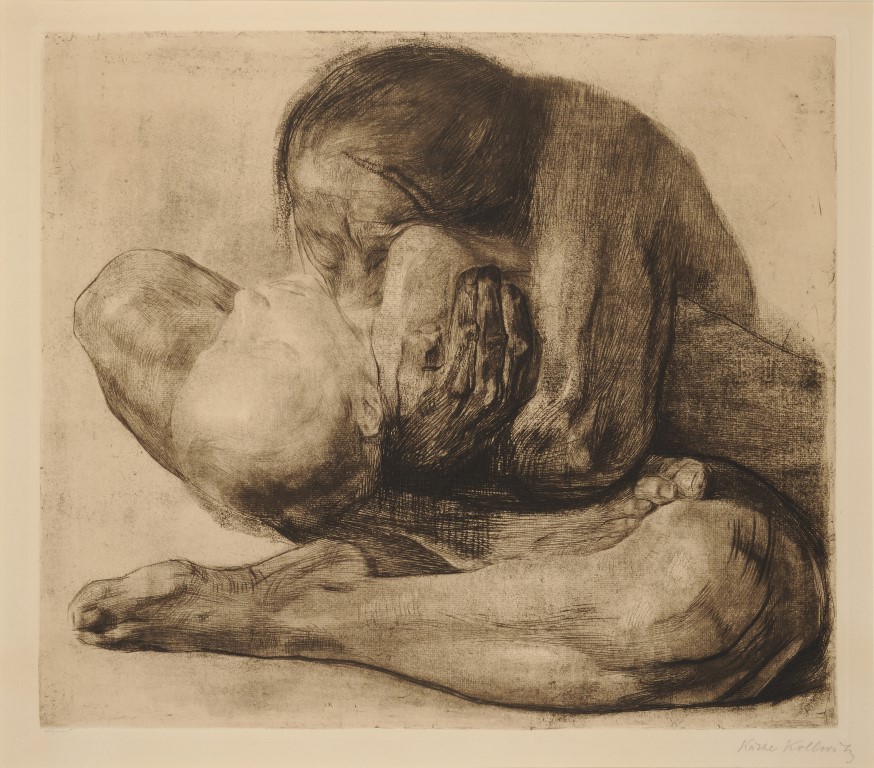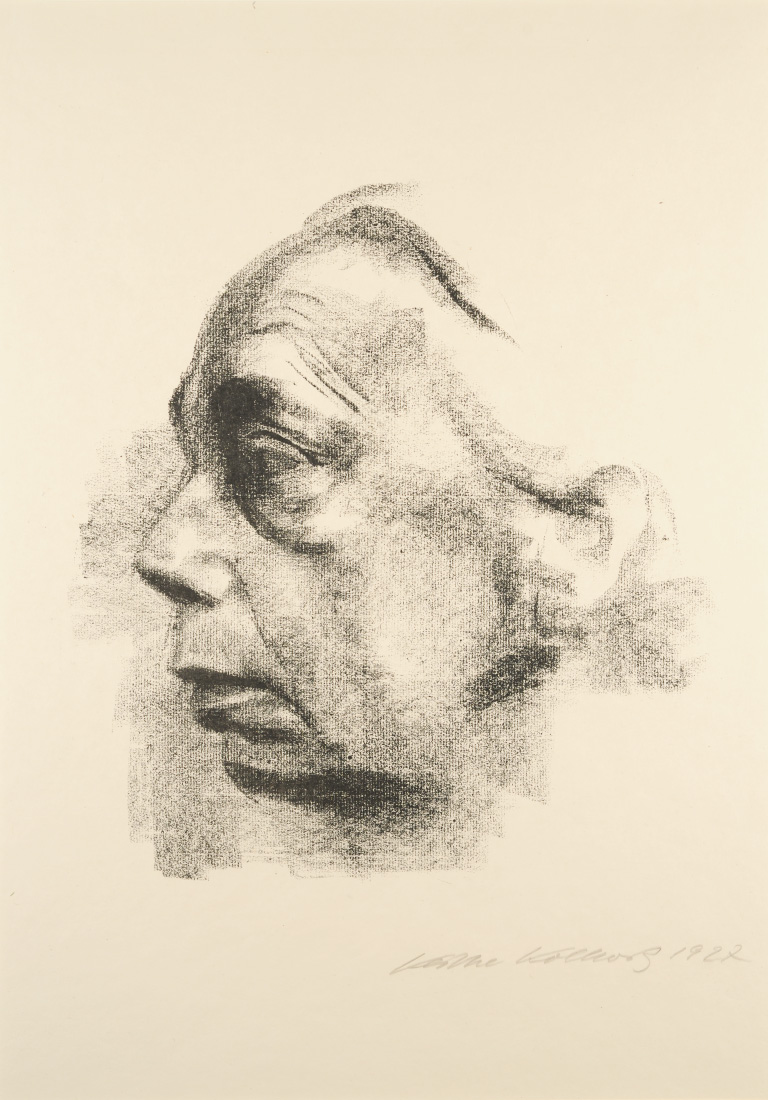Käthe Kollwitz: The Artist in Focus
By Helen Cobby, Assistant Curator at The Barber Institute of Fine Arts
The Barber Institute of Fine Arts is delighted to be lending Kollwitz’s etching, Woman with Dead Child (‘Frau mit totem Kind’), 1903, to Ikon gallery’s exhibition Käthe Kollwitz: Portrait of the Artist. This haunting work was acquired for the Barber collection in 2000.

Käthe Kollwitz, Woman with Dead Child, 1903, soft ground etching. The Henry Barber Trust ©The Barber Institute of Fine Arts, University of Birmingham
Female figures and images of mothers were prominent throughout the artist’s oeuvre. Motherhood was often a way for her to examine powerful emotions and situations experienced by many ordinary, working-class German citizens – a subject matter which grew in importance for Kollwitz during and after World War One.
When Kollwitz’s younger son, Peter, was killed on the Western Front in 1914, her images of mother and child acquired extra depth of expression and personal meaning. Such subject matter also became a way in which she explored, and perhaps even came to terms with, the process of mourning. It is poignant that the striking etching, Woman with Dead Child was made well before the start of the war and her son’s death; moreover, the live model for the dead child was Peter himself. The work can thus be interpreted as an uncanny premonition of what was to come for Kollwitz and many other mothers caught up in the conflict of World War One.
The intense emotion conveyed by Woman with Dead Child relies in part on the various densities and degrees of clarity of the etched lines, which communicate the mother’s body with more solid detail than the boy’s corpse. In this way, attention is drawn to the woman’s experience of – and response to – her offspring’s death, rather than making the child’s body the centre of attention.
The bold, dense lines also emphasise the mother’s tight embrace of the boy, her tensed muscles indicate her protective maternal instinct even after her son’s death. In addition, these prominent muscles heighten the contrasts between the living and the dead; the mother’s limbs appear quite tangible and dynamic in comparison to the ghostly and undefined body of the dead boy. Indeed, this work explores the isolated agony and physical and mental collapse of mothers who have lost their children.

Käthe Kollwitz, Self-Portrait in Profile, 1927, chalk lithograph on Japanese paper. The Henry Barber Trust ©The Barber Institute of Fine Arts, University of Birmingham
The Barber Institute has two other prints by Kollwitz, a self-portrait from 1927 that presents the artist with a careworn expression (which is also on loan to Ikon’s Kollwitz exhibition), and a lithograph entitled Help Russia from 1921. The latter was designed as a propaganda poster during the Russian Civil War, and demonstrates the artist’s sensibility to the social conditions of the working class. This print will be on show at the Barber’s Print Room display, Kollwitz and Contemporaries: German Graphic Art 1910-1923, running from 22 September 2017 to 14 January 2018. This display works in dialogue with the exhibition Käthe Kollwitz: Portrait of the Artist at Ikon gallery by providing examples of printing techniques and topics of concern by Kollwitz’s peers. It also offers some insight into the connections between the different artists working during this turbulent period in German history.

